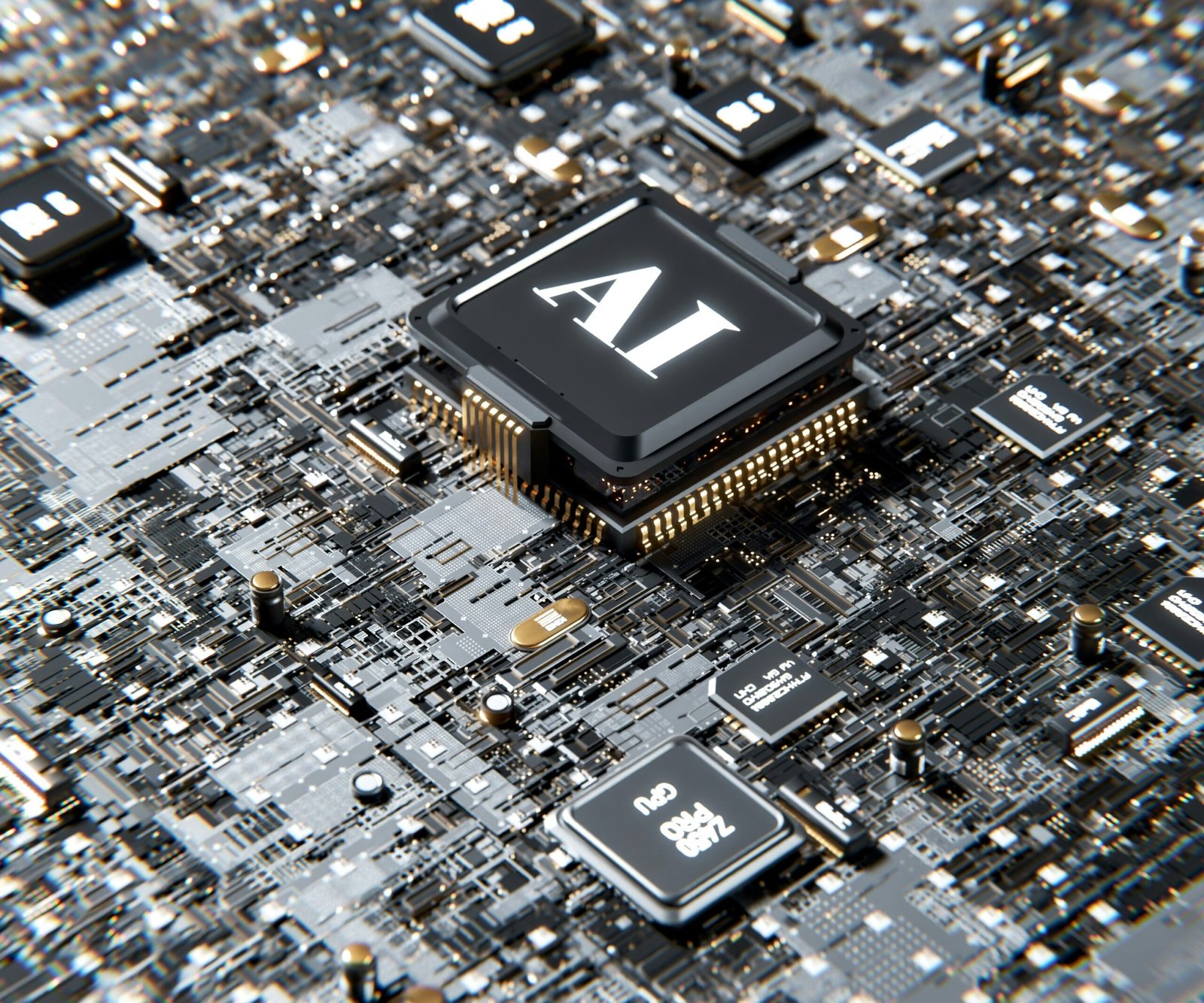Introduction to AI in Content Creation
The advent of artificial intelligence (AI) has significantly transformed the landscape of content creation across various media formats. As technology has evolved, AI tools have emerged as powerful allies for creators, enabling them to enhance their work processes and improve overall productivity. From writing and graphic design to video production, AI applications are reshaping how content is conceived, developed, and distributed.
Recent advancements in AI technologies, particularly in the areas of natural language processing and machine learning, have made it possible to automate several aspects of content creation. Advanced algorithms can now generate written content that is coherent, contextually relevant, and engaging. This capability not only streamlines the writing process but also allows creators to focus on higher-level tasks that require human creativity and emotional intelligence.
Moreover, AI assists in image and video production by automating editing processes, suggesting improvements, and even creating visuals from textual descriptions. For instance, AI-driven tools can analyze raw video footage, identify the most compelling clips, and produce edited videos efficiently, hence saving valuable time for content creators. Additionally, AI can provide insights based on data analytics, helping creators understand audience preferences and optimize content accordingly.
As the capabilities of AI in content creation continue to evolve, they present both opportunities and challenges. While they enable creators to enhance their efficiency and unleash new forms of creativity, there are also important ethical considerations surrounding the use of AI in creative processes. Overall, understanding these implications will be essential for anyone seeking to embrace AI technology to augment their content creation workflows.
AI-Powered Writing Tools
In recent years, the rise of artificial intelligence has revolutionized content creation, particularly through the development of advanced writing tools. These AI-powered platforms support writers in various stages of the writing process, including brainstorming, drafting, and editing their work. One of the most prominent examples is GPT-3, an advanced language model developed by OpenAI. It excels at generating human-like text based on prompts provided by the user. This tool can help content creators produce creative ideas, suggest topics, or even draft articles, thereby streamlining the initial phases of content generation.
Another notable tool is Grammarly, which enhances the quality of your writing through real-time grammar and style corrections. This AI-powered writing assistant provides suggestions for sentence structure, punctuation, and word choice, ensuring that the final output is polished and coherent. By analyzing the context and intent of the text, Grammarly helps maintain the writer’s unique voice while improving readability. It can be particularly beneficial for content creators who aim to convey professionalism and clarity in their writing.
For those focused on marketing content, Jasper is an invaluable AI tool that specializes in generating copy for various channels, such as social media, blogs, and email campaigns. Jasper employs AI algorithms to create compelling and persuasive text that resonates with target audiences. Its customizable templates and versatile functions enable marketers to save time while maintaining high-quality content that drives engagement. Each of these AI writing tools not only enhances productivity but also ensures that content creators can maintain originality and coherence, ultimately leading to better outcomes in their writing endeavors.
AI in Image Generation
The advent of artificial intelligence has significantly altered the landscape of image generation, providing innovative tools that enable content creators to produce original visual content effortlessly. Leading this transformation are platforms such as DALL-E and Midjourney, which utilize sophisticated algorithms to interpret textual prompts and generate high-quality images. These AI-driven tools exemplify the potential of technology to empower artists and designers, streamlining the creative process while expanding the boundaries of imagination.
DALL-E, developed by OpenAI, allows users to create a vast array of images based on precise or abstract descriptions. This capability is particularly valuable for graphic designers, allowing them to visualize concepts quickly without traditional manual processes. Midjourney operates similarly, focusing on artistic styles and aesthetic interpretations, thus catering to those in disciplines such as concept art and illustrative design. These platforms contribute not only to individual projects but also to broader community-driven initiatives, where creators can share and iterate on generated images.
The impact of AI in graphic design is profound. Content creators benefit from the efficiency of being able to produce custom visuals on demand, thereby enhancing the quality and appeal of their work across various mediums like websites, advertisements, and social media. This shift allows for quicker project turnaround times and an expanded creative toolkit that encourages experimentation with styles and compositions that may have been logistically challenging to achieve in traditional settings.
However, the integration of AI-generated images also raises ethical considerations. It prompts discussions around authorship, copyright issues, and the potential for misuse in creating misleading visuals. As AI continues to evolve, it becomes increasingly important for creators and consumers to navigate these dilemmas with a critical eye. Understanding these implications is crucial for responsible usage in the content creation process.
Video Production with AI Assistance
In the ever-evolving landscape of video content creation, artificial intelligence has emerged as a powerful ally for creators, marketers, and educators alike. AI tools streamline the production process, enhancing efficiency while maintaining creative quality. Among the plethora of available solutions, Lumen5 and Pictory stand out as exemplary platforms that utilize AI to transform traditional video production workflows.
Lumen5 is a user-friendly platform that allows users to convert text-based content into engaging videos effortlessly. By simply inputting a blog post or script, Lumen5’s AI algorithms analyze the text and suggest visuals, animations, and layouts that fit the narrative. This tool leverages a vast library of media assets, enabling creators to piece together high-quality videos without requiring extensive video editing skills. The automation provided by Lumen5 not only saves time but also caters to the rapidly changing digital marketing landscape where visual engagement is critical.
Pictory, on the other hand, specializes in video summarization, allowing users to distill long-form content into concise, captivating video segments. This AI-powered tool uses natural language processing to identify key points within the text and selects corresponding video clips, making it ideal for highlighting essential messages in a matter of minutes. Content creators can efficiently repurpose webinars, podcasts, or articles into short videos that are more likely to capture audience attention on social media platforms.
Both Lumen5 and Pictory exemplify how AI technology is revolutionizing video production, catering to the growing demand for dynamic visual content. These tools empower creators to produce high-quality videos while minimizing the effort typically associated with video editing and scripting. As AI continues to advance, its influence on video production will likely deepen, enabling content creators to master their craft with enhanced tools at their disposal.
The Role of AI in Content Ideation
In the digital age, content creators often face the challenge of generating fresh and engaging ideas that resonate with their audience. This is where artificial intelligence (AI) plays a significant role in content ideation, aiding writers and marketers in topic generation. By leveraging advanced algorithms and data analytics, AI tools can analyze vast amounts of information to provide valuable insights into audience preferences and trending topics.
One notable tool is BuzzSumo, which allows content creators to discover the most shared content within any niche. By entering specific keywords, users can identify popular articles, videos, and social media posts, as well as examine the engagement metrics associated with them. This data allows creators to tailor their content to meet the expectations of their target audience, ensuring relevancy and maximizing reach.
Another valuable resource is AnswerThePublic, which helps content creators understand what questions and topics are currently trending in their field. By visualizing search queries and audience interests based on Google data, this tool provides a comprehensive overview of what potential readers are seeking. This not only aids in brainstorming sessions but also enhances the ability to create content that directly addresses the curiosities and needs of the audience.
Utilizing AI-driven insights can significantly impact a content strategy, assisting creators in crafting more effective content plans. By pinpointing specific themes and topics that are likely to engage the audience, creators can allocate resources more efficiently and streamline their production efforts. Furthermore, these insights ensure that the content generated is not only timely but also resonates with the audience, ultimately leading to higher engagement and satisfaction.
Incorporating AI into the ideation process can thus transform content creation from a challenging task into a strategic endeavor, enabling content creators to masterfully navigate the evolving landscape of audience interests.
Challenges of Using AI in Content Creation
The integration of AI tools in content creation presents several challenges that require careful consideration. One major concern is the potential for biases within AI outputs. AI systems are reliant on the data used to train them. If this data contains inherent biases, the resulting content produced may inadvertently reflect these prejudices. This can lead to the dissemination of misleading, incorrect, or unbalanced information, which undermines the integrity of the content and can harm various communities.
Over-reliance on AI technology represents another significant challenge. While these tools can facilitate the efficiency of content generation, there is a danger that creators may depend on them too heavily, potentially stifling creativity and originality. Content that is solely AI-generated might lack the unique nuances and human touch that resonate deeply with audiences. As content creators, it is essential to strike a balance between utilizing AI for efficiency and maintaining an individual creative flair that engages and captivates the audience.
Furthermore, the need for human oversight in AI-generated content cannot be overstated. Although AI can automate numerous aspects of the content creation process, it lacks the ability to fully comprehend context, emotions, and cultural nuances. This limitation necessitates a human touch to review, edit, and refine the outputs, ensuring that the final product meets quality standards and aligns with the intended message. It is crucial for content creators to remain intimately involved in the creative process, using AI as a supportive tool rather than a substitute for human ingenuity.
In reflecting on the challenges posed by AI in content creation, it is evident that while these tools can enhance productivity and expand creative possibilities, awareness of their limitations is essential. By critically assessing the role of AI in their projects, content creators can harness technology responsibly, leading to content that is both innovative and meaningful.
Best Practices for Integrating AI into Your Workflow
In the realm of content creation, integrating artificial intelligence (AI) can significantly enhance efficiency and productivity. However, it is crucial to approach this integration thoughtfully to ensure that the distinct human voice remains intact. To begin with, selecting the right AI tools is essential. It is advisable to evaluate various AI solutions according to specific content needs. For instance, one might consider tools focused on writing assistance, content analysis, or video production. Before making a decision, conducting thorough research and, if possible, utilizing trial versions can provide significant insight into which tools align best with content goals.
Once appropriate AI tools are selected, it is important to establish a balance between AI assistance and personal creativity. While AI can streamline various processes—such as generating ideas, drafting content, or optimizing video edits—it should not replace the unique perspectives and emotional nuances that a human creator brings to a project. Writers and producers are encouraged to use AI as a collaborator rather than a crutch, utilizing its capabilities to save time while ensuring that their creative voice and originality shine through.
Moreover, training oneself to use AI tools effectively is a critical component of successful integration. Many platforms offer tutorials and resources that can help users become proficient in their functionality. Engaging with these educational materials can help developers understand the full range of AI capabilities, enabling them to utilize the technology to its fullest potential. Regularly experimenting with these tools within existing workflows allows for continuous learning and adaptation, which is key in a rapidly evolving landscape. Ultimately, by leveraging AI in a thoughtful, strategic manner, content creators can enhance their output while retaining their authentic creative voice.
Future Trends in AI and Content Creation
As we look to the future, the integration of artificial intelligence (AI) into content creation will continue to evolve, driven by significant advancements in several key areas. One notable trend is the ongoing improvement of natural language processing (NLP) technologies. These advancements will enable AI systems to understand and generate human-like text with greater accuracy and fluency. This will not only enhance the quality of written content but also expand the capabilities of AI in diverse forms of media, including blogs, articles, and scripts for video production.
In addition to NLP, the visual generation capabilities of AI are set to undergo remarkable transformations. Upcoming innovations will allow AI to create high-quality images, animations, and videos, thereby revolutionizing the way visual content is produced and consumed. These technologies could enable creators to generate stunning graphics and immersive videos effortlessly, facilitating a new wave of creative expression across various platforms. Such advancements will empower content creators and marketers to engage audiences in more dynamic and compelling ways.
Another significant trend is the personalization of content on an unprecedented scale, aided by AI’s ability to analyze user behavior and preferences. This will lead to the development of tailored content that resonates with individual users, increasing engagement and conversion rates. As AI systems become more adept at gathering and interpreting data, businesses can expect to harness these insights to craft unique experiences for their audience, boosting customer loyalty and satisfaction.
Ultimately, the fusion of AI with content creation heralds a new era of possibilities that can enhance creativity, efficiency, and effectiveness. Content creators should prepare for these changes by staying informed about emerging technologies, adopting innovative tools, and embracing new methodologies that leverage AI’s capabilities to their full potential.
Conclusion: Embracing AI as Your Content Creation Partner
As we navigate the evolving landscape of content creation, it is essential to recognize the invaluable role that AI technologies can play in enhancing our creative processes. From writing compelling articles to producing engaging videos, AI serves as a versatile partner that can amplify our productivity and broaden our creative horizons. By harnessing automated tools, content creators can streamline their workflows, freeing up time to focus on higher-level creative thinking and strategy.
However, while the integration of AI into content creation is promising, it is crucial to maintain a balance between technology and personal creativity. AI tools can provide data-driven insights, assist in generating ideas, and even suggest improvements based on audience engagement metrics. Yet, the human touch remains irreplaceable. Authentic storytelling, unique voice, and emotional resonance are elements that AI cannot replicate, emphasizing the importance of preserving one’s creativity and authenticity even when utilizing AI assistance.
Moreover, as content creators, we should view AI not as a replacement for our skills, but as a collaborative tool that can enrich our craft. Whether it’s identifying trending topics, optimizing our content for search engines, or personalizing user experiences, AI has the potential to enhance our offerings. This partnership between human creativity and artificial intelligence can result in innovative and impactful content that resonates with audiences on a deeper level.
In summary, embracing AI technologies as partners in our creative endeavors will not only improve efficiency but also foster an environment where content creation can thrive. By leveraging AI while nurturing our unique creative expressions, we can elevate our work and continue to engage audiences in meaningful ways. As we move forward, it is vital to embrace this partnership, ensuring that our authenticity shines through amidst the advancements of technology.


